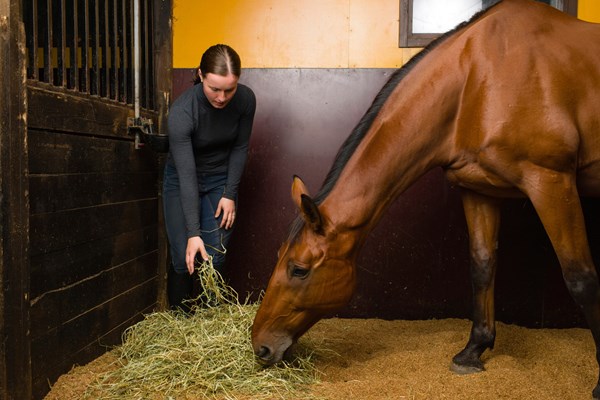There are a lot of things that can take a back seat when an unexpected event takes place at the barn. Lessons can be rescheduled, training rides can be postponed and fence repairs can be put on hold as long as the horse has a stall or a different paddock.
 Credit: Thinkstock What would happen if your regular hay supplier went out of business or ran out of hay? Do you have a plan to obtain hay from another place?
Credit: Thinkstock What would happen if your regular hay supplier went out of business or ran out of hay? Do you have a plan to obtain hay from another place?But feeding just can’t wait.
Regardless of where your barn is located, it’s important to have a contingency plan so that you don’t run out of concentrate feed or hay. Planning should account for having enough on hand for a given number of days, weeks or months. Contingency planning should also cover an unexpected change in hay or feed supplier.
“I encourage anyone managing a barn to re-educate themselves on nutrition so that the hay and feed is appropriate to the horse’s activity level,” said Laura Napoleone, owner Hudson Derby Stables and Lead Change Solutions, an equine consulting agency in Massachusetts. “Don’t be close-minded to one brand of feed. Read the labels, compare quality, price, etc.”
That way, if a feed dealer goes out of business or changes the brand available for sale, you can find a comparable alternative.
“Hay is tough because the challenges and cost of hay are specific to the geographic region where the barn is located,” she said.
Weather conditions during harvest season can affect the quality of hay, its availability and the price. Planning for on-site storage might be a feasible contingency plan.
“Consider if it’s worth building hay storage. That will allow you to stock up when you have the space and the money,” she said.
If storage space isn’t available at your facility, it might be worth exploring alternative storage options. For example, can you pre-purchase the quantity you need for six months or a year and store it at the producer’s facility?
For some stable owners, grazing is an important component of the daily feeding routine. Contingency planning needs to take into account weather patterns that affect the availability and quality of the grass. Current and long-term weather forecasts can alert you to potential shortages due to drought, then you can purchase hay accordingly.
Your veterinarian and local cooperative extension can offer nutritional advice and alternatives for ensuring you have enough hay and feed available for the horses in your care.
Save


